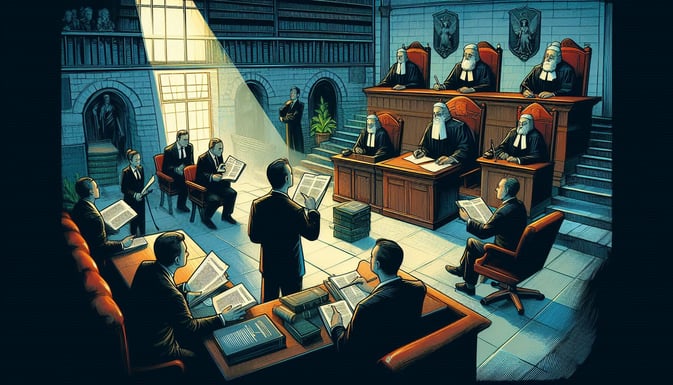Examination-in-chief, Cross-examination, and Re-examination.
Somya Rajawat
Maharani Laxmi Bai Arts and Commerce College, Gwalior, M.P.
This Blog is written by Somya Rajawat, a Law Graduate of Maharani Laxmi Bai Arts and Commerce College, Gwalior, M.P.


Introduction:
The examination is the term that indicates the process of witnesses extracting truth and relevant points from the given subject matter. It is conveyed in three stages: examination-in-chief, cross-examination, and re-examination, and their order is also the same. It is defined under chapter ten of the Indian Evidence Act,1872, and Bhartiya Sakshya Adhiniyam,2023.
Examination-in-chief:
Examination-in-chief is defined under section 137 of the Indian Evidence Act,1872, and section 142 of Bhartiya Sakshya Adhiniyam,2023. It is the process of examination of a witness by the party who calls him and it is the first step of examination. In a general sense, it means, the examination of witnesses done by their advocate or parties. During the examination-in-chief witness elaborates the facts and circumstances of the subject matter of the case by his knowledge. This whole process is part of a judicial proceeding.
Cross-examination:
The term cross-examination is defined under section 137 of the Indian Evidence Act,1872, and section 142 of Bhartiya Sakshya Adhiniyam,2023. It is the process of testifying the interrogation of a witness by the adverse party. In a general sense, cross-examination means the advocate of the opposite party can ask the question to the witness after the examination-in-chief to check the credibility of the witness. It is one of the most essential parts of judicial proceedings.
Production of the document during cross-examination:
During the process of cross-examination if there is a need for the production of the document then they can be summoned a witness to produce the document as per section 139 of the Indian Evidence Act,1872 and section 144 Bhartiya Sakshya Adhiniyam,2023. A person who is summoned to produce a document can not be called up as a witness as well as cannot cross-examined until and unless he is called as a witness.
Questions considered in cross-examination:
· As per section 140 of the Indian Evidence Act, 1872, and section 145 of Bhartiya Sakshya Adhiniyam, 2023, the adverse party is allowed to ask the question on subject matter of witness of character.
· The leading question can be asked during cross-examination as per section 143 of the Indian Evidence Act, 1872, and section 146 of Bhartiya Sakshya Adhiniyam. Leading questions are those questions that suggest the answer to the question.
Re-examination:
The re-examination of the witness is defined under section 137 of the Indian Evidence Act, 1872, and section 142 of Bhartiya Sakshya Adhiniyam, 2023. It is the third step of the examination, during this process, a party is for examination after the cross-examination. It generally carries those questions that are related to cross-examination and if in case any new question arises during the re-examination then it is subject to cross-examination with the permission of the court. It is not an essential part of judicial proceedings.
Conclusion:
The Indian Evidence Act, 1872, and Bhartiya Sakshya Adhiniyam, 2023 protect the right witnesses and allow them to elaborate on the facts and circumstances of the case freely. During this examination process, each step plays a significant role in dealing with the case and this whole examination process follows a certain order to convey examination from witness.
Reference:
· Bare act
· https://www.legalserviceindia.com/article/l15-Examination-in-chief.html
· https://www.lawctopus.com/clatalogue/clat-pg/cross-examination-of-witness-the-indian-evidence-act/
